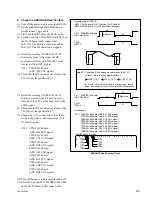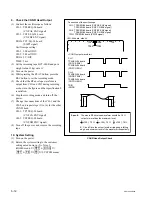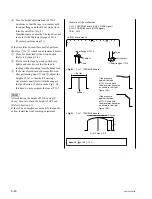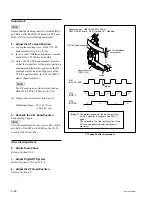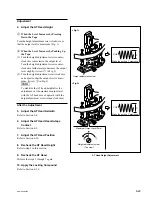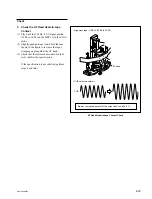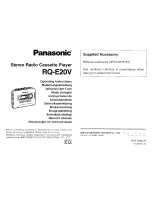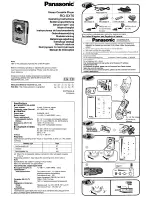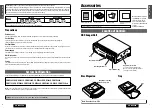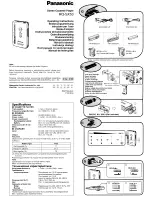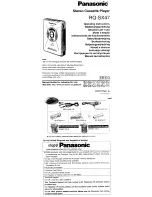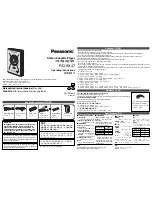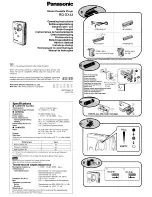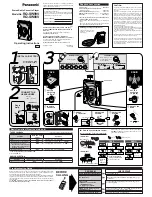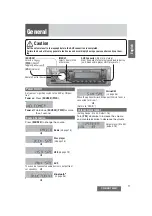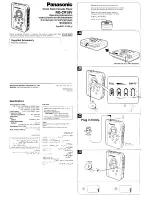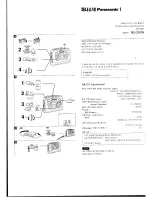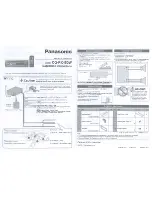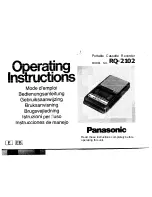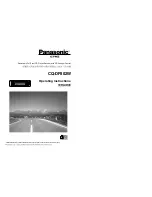
6-20
SRW-5000/5500
Upper flange of TG-3
Lower flange of TG-4
Tape
Contact
No contact
Tape
<Fig.2> CH-1 : TP52/EQ-94 board
Marker
Be flat
If the pressure
against the tape
at TG-3 is too much,
the waveform becomes
as shown in the right
figure. (NG)
If the pressure
against the tape
at TG-3 is too little,
the waveform becomes
as shown in the right
figure. (NG)
RF max
A
C
<Fig.3> CH-1 : TP52/EQ-94 board
A = RF max
x
0.8
C
x
100
>
70 %
A
Spec.15 :
A
B
C
D
E
F
G
H
J
K
L
M
N
P
1
2
TP52
TP5
<EQ-94 board, side A>
CH-1 : TP52/EQ-94 board (CNF CG ENV signal)
CH-2 : TP5/EQ-94 board (SWP5 signal)
TRIG : CH-2
.
Connection of the oscilloscope
(8) Turn the height adjustment nut of TG-3
clockwise so that the tape is in contact with
the upper flange and the RF envelope wave-
form becomes flat. (Fig. 2)
Simultaneously, ensure that the tape does not
in contact with the lower flange of TG-4.
(If contact, perform step (5).)
If the waveform does not become flat, perform
the steps
1
to
3
(check and adjustment) below:
1
Clean the drum lead with a wooden stick.
(Refer to Section 4-2-4.)
2
Press down the tape by wooden stick very
lightly and check to see that the tape is
running without aparting from the drum lead.
3
If the waveform does not become flat even
after performing steps
1
and
2
, adjust the
height of TG-3 so that the RF envelope
waveform is nearly flat within the range of
the specification 15 shown in the Fig.3. At
this time, do not overpress the tape at TG-3.
n
After adjusting the height of TG-3 in step
3
above, be sure to check the height of AT head
(Refer to Section 6-7).
If the AT head height does not satisfy the specifi-
cation, restart the video tracking adjustment.






